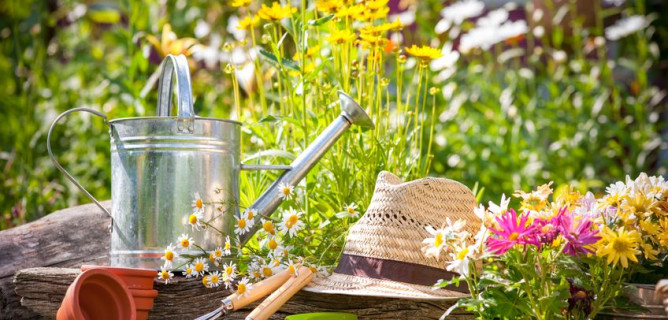 Whether you want to plant a vegetable garden or a flower garden, there are basic horticultural rules to follow that will help you achieve a glorious garden. Planting your own garden can be a great hobby. If you’re planting flower and shrub gardens, your house will get an aesthetic boost in beauty. If you’re planting vegetable and fruit gardens, your house will enjoy many fresh fruits and home-cooked meals. Following are ten steps to help you start a great garden:
Whether you want to plant a vegetable garden or a flower garden, there are basic horticultural rules to follow that will help you achieve a glorious garden. Planting your own garden can be a great hobby. If you’re planting flower and shrub gardens, your house will get an aesthetic boost in beauty. If you’re planting vegetable and fruit gardens, your house will enjoy many fresh fruits and home-cooked meals. Following are ten steps to help you start a great garden:
1. Prepare the soil
It’s important to prepare the soil as this is the foundation for each garden. Soil can have too much sand, too much clay, or be too poor. It’s also most likely lacking organic matter, which is what brings life out of good soil. Build your soil with a few inches of compost and any nutrients that may be lacking. Use a soil test to let you know where you are and what you need to add.
2. Ensure good drainage
In Texas rainfall is unpredictable. Plants roots need oxygen and can’t survive sitting in waterlogged soil. You also won’t be able to get into your garden to plant or work the soil, if it’s too wet. Be sure to raise your beds high enough to ensure water drainage.
3. Sunlight
Most vegetables prefer full sun exposure. Be sure to select a site that gets a lot of sun. Vegetables such as tomatoes, peppers, eggplant, melons and roots such as carrots, turnips, and radishes need at least six hours of sunlight a day. Lettuce, collards, spinach, and chards can tolerate some shade.
4. Proven and adapted varieties of plants
Find out which plants have survived in your area. Build your garden around the plants that you know will survive and don’t plant only one variety. Plants flourish differently each year. What didn’t do well one year, can do excellent the next. If you’re planting a vegetable or herb garden, be sure to focus on short-maturing varieties. Texas springs aren’t long enough for long-maturing varieties to do well.
5. Plant at the appropriate time
In Texas, there is a small window between freezing and extremely hot weather in spring. If you wait too long to plant certain plants, they will not do well. If you plant too early, they may not survive late frost.
6. Healthy Transplants
Be sure the plants you buy are healthy and are actively growing. Buy them from a reputable nursery. If a plant hasn’t been cared for properly, it won’t survive a transplant. Be sure to feed them with a starter solution right after you plant them. Fish emulsion, seaweed solution, and compost tea are examples of soluble fertilizers that you can use to feed them.
7. Don’t overplant
It’s better to start small. Before you plant large gardens of vegetables, you should learn to garden them. If you plant too much, it could end up being too much for you to handle. You can always add more plants later.
8. Feed with enough nutrients
Healthy plants grow fast and produce well. By the time you notice a nutrient deficiency, it’s too late to do anything for that plant or crop. A few weeks after transplanting, side-dress them with a little fertilizer. A natural 8-2-4 or 6-2-4 blend is good. Cottonseed meal and blood meal can also be used. Certain vegetables respond better to fish emulsion and seaweed solution.
9. Detect Pest Early
If you don’t prevent pest and disease problems before they start, they can kill all your plants. Pests are easier to control when they’re young and the infestation is limited. Look your garden over every few days. Turn leaves over to check for pests.
10. Stop Weeds Before They Start
Preventing weeds is much better than pulling them. When weeds are tiny seedlings, you can scratch the surface lightly and it destroys them. Once they grow, their roots are strong and they’re harder to deal with. Spraying weed killer is dangerous as it can kill your plants.
Source: www.texasgardner.com
Courtland Building Company would love to help you plan your green home, call us today: (281) 932-4494
Visit our website: www.courtlandbuildingcompany.com Follow Us on Facebook – Twitter – LinkedIn– Google Plus


